Sask. COVID-19 case details expand after Premier Scott Moe pledges more transparency
COVID-19 case details had become less specific as infection numbers grew
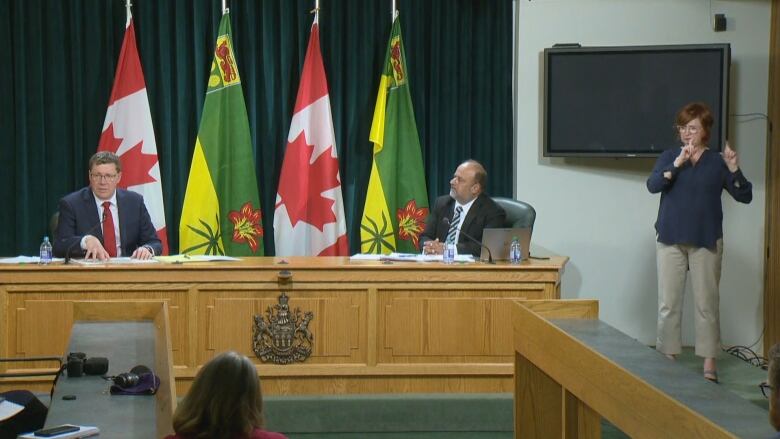
One day after Premier Scott Moe pledged"a higher degree of transparency" in reporting COVID-19 case data, the government has included more detail about positive cases.
"I talked with the minister of health this morning, specific to trying to be as transparent as possible with the information that we're providing through the media to the people of the province," Moe said on Wednesday.
He said information such as the ageof positive COVID-19cases, general locations, hospitalizations and recoveries could be provided in more detail in the future.
"Just be a little bit gracious with us," Moe said. "We are endeavouring to get to a level of a higher degree of transparency. We're attempting to get there as soon as we can."
The province's chief medical health officer, Dr. Saqib Shahab, also said more data would be provided publicly but did not provide a time line.
"We need to get better information on the website. And now that we have numbers that are large enough to get that tabulation we will be doing that," Shahab said Wednesday.
On Thursday, the government included hospitalizations, intensive care admissions and recoveries by region for the first time.
It also added a new age range, splitting the 20-64 category into 20-44 and 45-64.
It has not provided a breakdown of cases by sex, but is reporting the percentage of cases involving men and women.
This is what the government table looked like on Thursday:
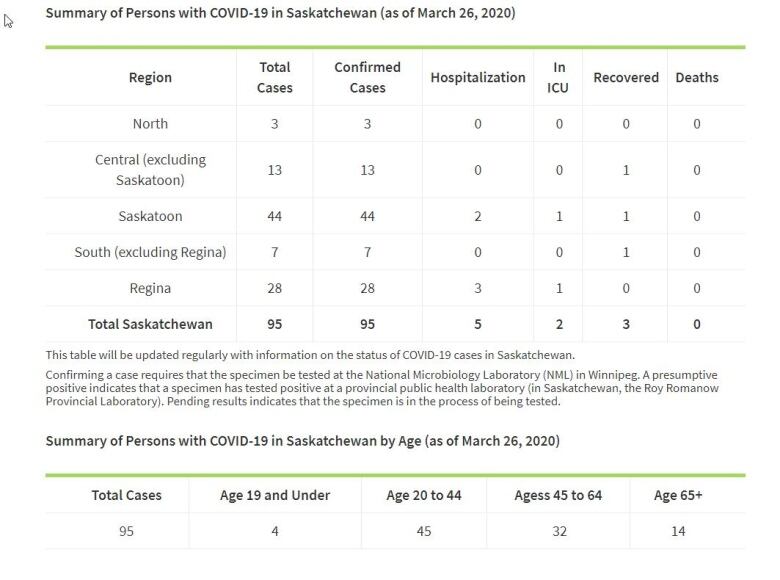
On Wednesday the table looked like this:

Information shared on earlycases
Since the province began publicly reporting presumptive cases of COVID-19 the level of detail provided has waned.
The first case of COVID-19 in Saskatchewan was reported on March 12. Dr. Shahab told the public the case was a Saskatoon man in his 60swho had recently returned from Egypt.
Shahab said the man was self-isolating at home and had not come into contact with community members.
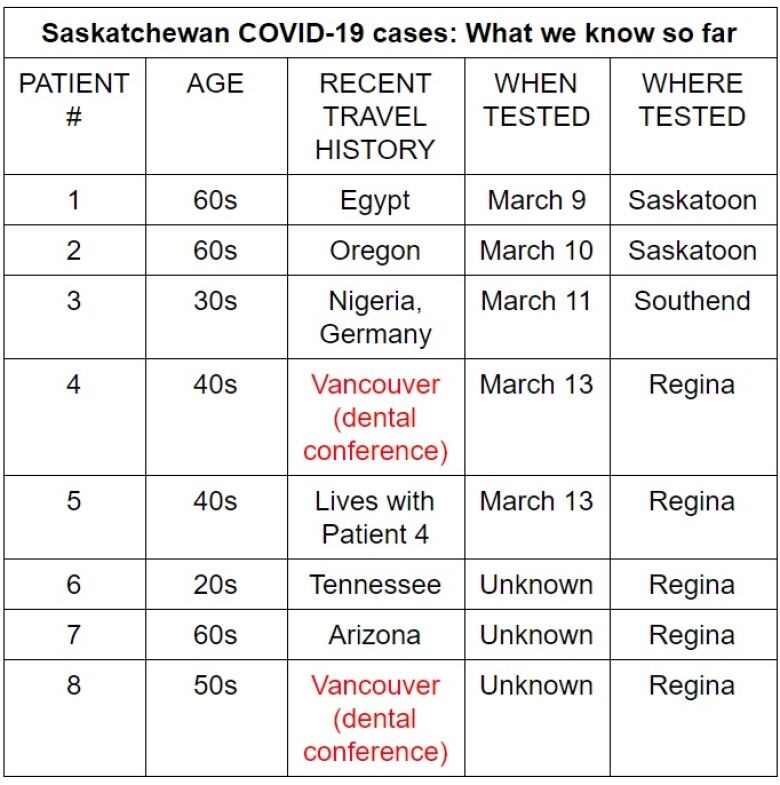
The province's second presumptive case was a person in their 60s who had recently travelled from Oregon and was tested in Saskatoon.
On March 14, the Saskatchewan Health Authority identified fourmore presumptive cases, including two people in their 40swho lived in the same Regina household. One of the residents attended a dental conference in Vancouver.
As of Thursday afternoon, the province had a total of 95 COVID-19 cases.
No consistent reporting practice nationally
The reporting across Canada is not consistent. Alberta, for example, provides a more detailed breakdown of positive cases by region, age and sex.
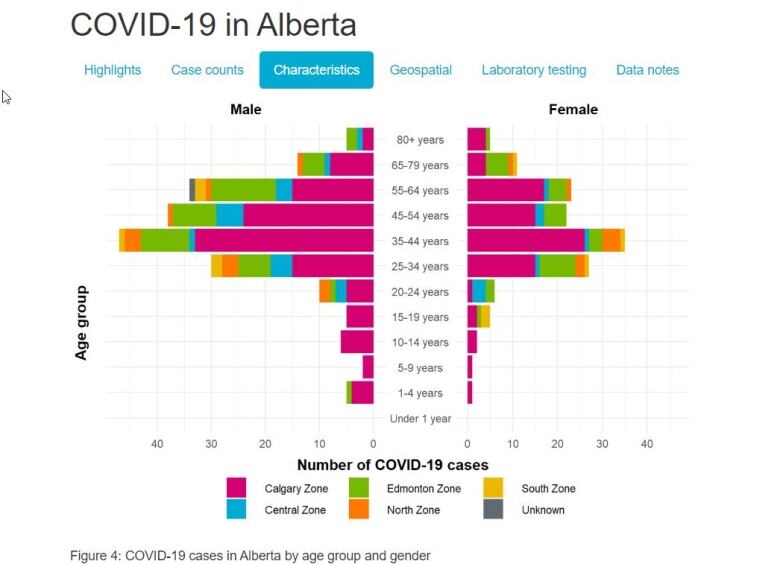
Manitoba reports cases by sex, health region location and age range in 10-year increments.
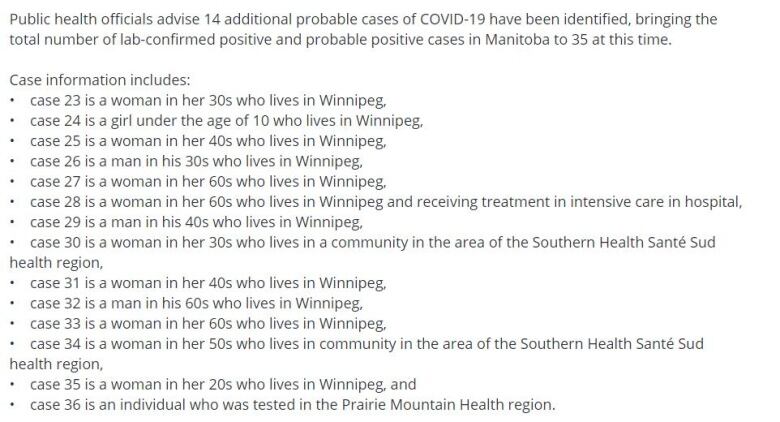
B.C. is sharing the health region, but not the city, where the patient is located. Its provincial health officer, Dr. Bonnie Henry, said last week the community where someone has tested positive has become less important.
"We're now at the place where it's irrelevant what community you're in. The risk of this virus is everywhere in British Columbia, everywhere in Canada," she said Friday.
The government of Canada's website has an epidemiological summary of the country.
On Tuesday, CBC asked health officials if any cases had escalated to the ICU.
"I don't have that information," Saskatchewan Health Authority chief medical officer Susan Shaw said, "and if I had that information it would not be appropriate to share it, because of the importance of protecting our patient's personal health information."
Shaw followed up on Twitter: "when numbers are fortunately small (2) it is good practice to be initially limit what level of detail is shared. These numbers are mothers, brothers, cousins, friends, members of tightly knit Sask.communities. Unfortunately should numbers grow, more can be shared."
CBC had not asked for any information that would identify patients.
On Wednesday, Dr. Shahab provided hospitalization details of COVID-19 cases. Four people were in the hospital and two were in ICU.
"As numbers unfortunately increase we will report in more specificity," Shahab said.












_(720p).jpg)


 OFFICIAL HD MUSIC VIDEO.jpg)
.jpg)



























































































